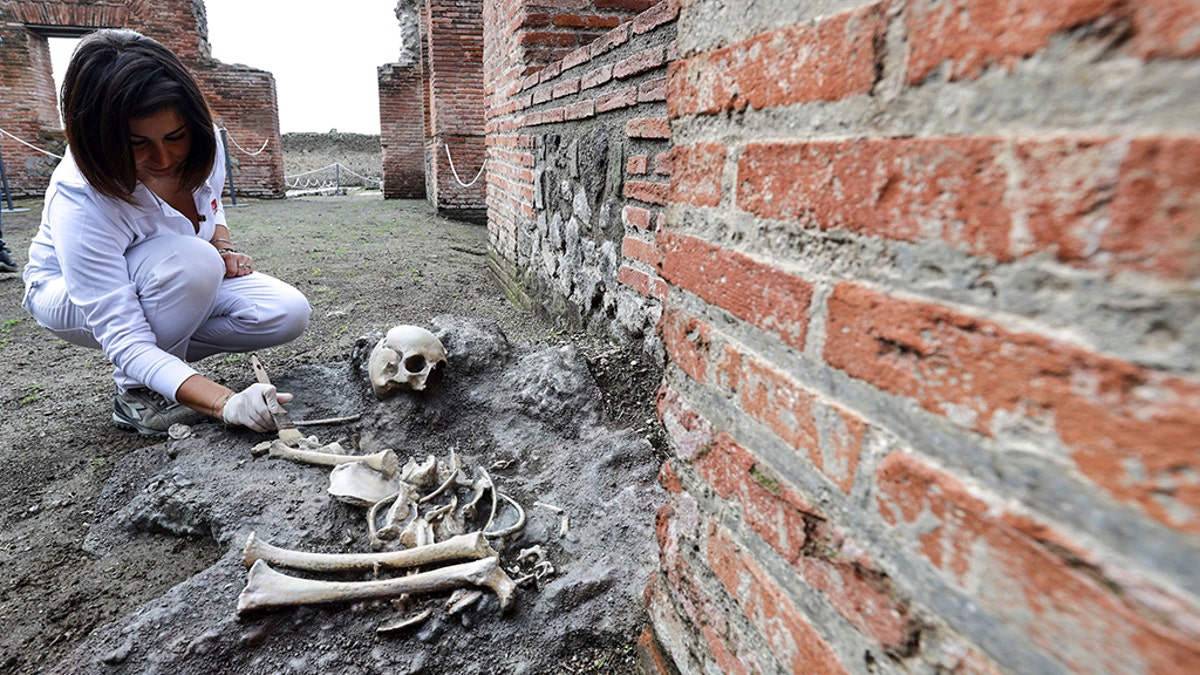
Pompeii excavations New excavations at Pompeii, Naples, Italy - 25 Nov 2019 Pompeii excavations opened to the public along with the great discoveries in the Regio V in the Archaeological Park of Pompeii. (Credit: Napolipress/Shutterstock (10484952h))
Thermal baths designed to be 'the jewel of Pompeii' have finally been opened to visitors after a painstaking excavation.
The Roman city was destroyed by a volcanic eruption 2,000 years ago before its ancient inhabitants could make use of the baths but now tourists will be able to marvel at them instead.
Perhaps the most impressive find in the bath house was the skeleton of a child who had likely tried to seek shelter in there during the deadly volcanic eruption.
The remains of the child were found amongst the pillars, blocks and tiles which once made up the grand structure.
It's thought that the child was somewhere between eight to ten years old when they died.
Mount Vesuvius, the Italian volcano which is still regarded as dangerous, erupted in 79 AD and destroyed Pompeii with ash and lava.
Although the city's inhabitants were unable to spot the warning signs that the volcano was about to kill them all, they actually lived in a very sophisticated and complex society.

New excavations at Pompeii, Naples, Italy - 25 Nov 2019 Pompeii excavations opened to the public along with the great discoveries in the Regio V in the Archaeological Park of Pompeii. (Credit: Napolipress/Shutterstock (10484952m) Pompeii excavations)
The archaeological site's director Massimo Osanna told AFP that the architects of the bath house "were inspired by Emperor Nero's thermal baths in Rome. The rooms here were to be bigger and lighter, with marble pools."
The Central Baths are located in an area that has been restored during the Great Pompeii Project.
This started back in 2012 after the 2,000-year-old "House of the Gladiators" collapsed and caused worldwide outrage.
The bath house stands out as an interesting place for tourists to visit at the site because it's unusually large and has spacious rooms compared to other building in the cramped ancient city.
Other bathhouses in the city were much smaller, darker and were likely overcrowded.
The Central Baths are thought to have been built as a luxurious alternative for those rich enough to afford it.
Pompeii actually has around 50 people on the site permanently working to restore and protect it.
Violent weather caused by climate change is said to be the biggest challenge facing the vulnerable UNESCO world heritage location.
This story originally appeared in The Sun.




















